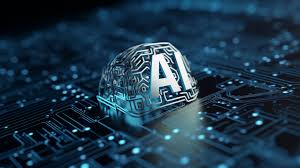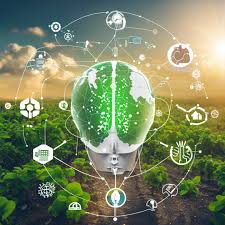
“Leading the Charge: Innovations in AI Energy Efficiency for a Sustainable Future Transform 2025”

In recent years, artificial intelligence has gone from a futuristic concept to a transformative force shaping nearly every industry. From powering personalized recommendations on streaming platforms to advancing medical diagnostics and streamlining business operations, AI is rapidly becoming a cornerstone of modern innovation.
But as AI systems grow smarter, there’s a crucial question the world is beginning to ask more loudly: how much energy does AI really consume—and can we make it more efficient?
The answer is both complex and encouraging. While the energy demands of large AI models have been significant, a global effort is underway to revolutionize the way AI is developed, trained, and deployed, ushering in an efficiency revolution that’s focused on sustainability without compromising performance.
AI Trends
💡 Why AI Energy Use Matters

The rise of large language models, neural networks, and deep learning has required increasingly powerful hardware and data centers. Training a single cutting-edge AI model like GPT-3, for example, has been estimated to consume as much electricity as several hundred U.S. households do in a year.
Multiply that across countless experiments, iterations, and applications, and the carbon footprint adds up.
AI energy use matters because:
- It contributes to greenhouse gas emissions.
- It affects the long-term sustainability of tech infrastructure.
- It drives demand for energy-intensive hardware like GPUs and TPUs.
- It can disproportionately impact regions with limited energy resources or older infrastructure.
But here’s the good news: We’re not stuck with the status quo.
⚙️ Innovation Meets Efficiency

1. Smarter Architectures
AI researchers are increasingly focusing on building models that are not just powerful but efficient by design. Techniques like sparsity, quantization, knowledge distillation, and low-rank factorization allow smaller models to achieve results similar to their larger counterparts—with drastically reduced computational overhead.
Companies like OpenAI, DeepMind, and Hugging Face have been working on models that prioritize performance per watt rather than sheer scale.
2. Hardware Advances
The hardware landscape is evolving fast. New chips like Google’s TPUv5e, NVIDIA’s H100, and Graphcore’s IPUs are being developed specifically for efficient AI workloads. These specialized processors offer faster computation with lower energy costs compared to traditional CPUs and general-purpose GPUs.
Moreover, innovations like neuromorphic computing—which mimics the way the human brain processes information—are promising radical reductions in power consumption for future AI applications.
3. Data Center Sustainability
The major tech giants (Google, Amazon, Microsoft) are investing heavily in green data centers powered by renewable energy sources such as solar, wind, and hydro. Google’s goal is to run all its data centers on carbon-free energy 24/7 by 2030, and Microsoft is aiming to be carbon negative by 2030.
This shift doesn’t just reduce emissions—it makes the AI lifecycle more eco-friendly from training to deployment.
4. AI for Energy Optimization
Interestingly, AI is also being used to reduce energy consumption.
For instance, machine learning algorithms can optimize cooling systems in data centers, reducing electricity usage. Google’s DeepMind has famously used AI to cut energy used for cooling its data centers by over 40%.
AI is also aiding in smart grid management, predictive maintenance, and dynamic resource allocation, making energy systems themselves more responsive and efficient.
🔄 Shift Toward Smaller, Purpose-Built Models

Another key trend is the movement away from massive, general-purpose models toward smaller, task-specific AI. These models are cheaper to train, faster to run, and much more energy-efficient.
This approach aligns with the emerging principle of “right-sizing AI”—using just the level of complexity needed for the task at hand. It’s a powerful shift that can reduce energy consumption across the board while keeping solutions affordable and scalable.
🌍 A Global Effort Toward Greener AI

The AI community is also beginning to embrace a more transparent and ethical approach to energy reporting. Tools like ML CO2 Impact, CodeCarbon, and Green Algorithms are helping researchers track the energy usage and emissions of their AI projects.
There’s also growing momentum behind regulatory and voluntary reporting standards, which could soon make energy disclosures a standard part of publishing AI research and deploying commercial solutions.
Organizations like the Partnership on AI and Climate Change AI are bringing together scientists, policymakers, and technologists to ensure the future of AI is not just intelligent, but sustainable.
✅ The Bottom Line

Artificial intelligence is here to stay, but the way we build, train, and power it is rapidly evolving.
The so-called “efficiency revolution” is a global movement—pushed by researchers, tech giants, startups, and environmental advocates alike—to ensure that AI contributes to a sustainable future instead of straining it.
We’re already seeing proof that powerful, transformative AI doesn’t have to come with a heavy energy price tag. And as innovation continues, we’ll move even closer to a world where intelligent systems work not just for us, but with the planet in mind.
🌱 What’s Next?
If you’re in tech, AI, or sustainability, now’s the time to:
- Audit the energy use of your AI models.
- Choose green hosting and cloud providers.
- Explore efficient model architectures.
- Join communities focused on AI sustainability.
This isn’t just about saving energy. It’s about redefining what progress means—where innovation meets responsibility.






